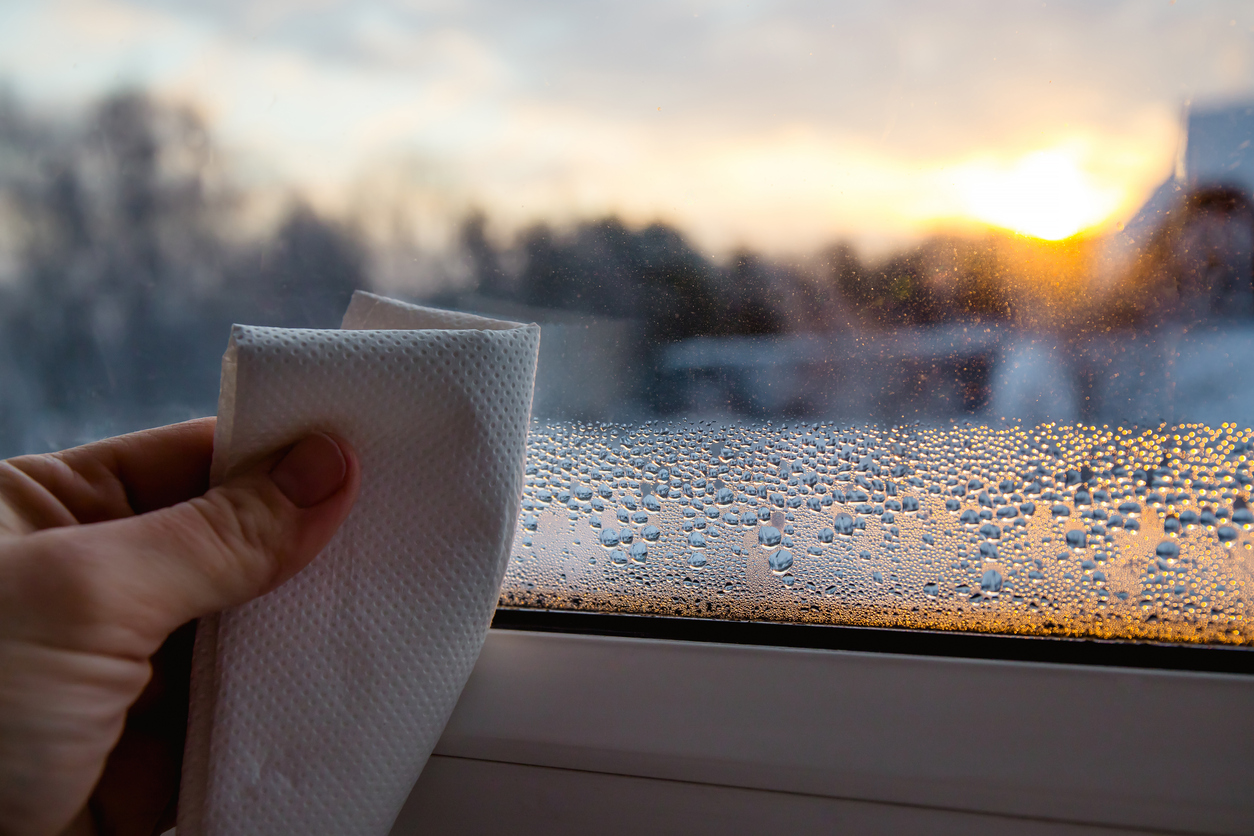Homeowners often find the humidity levels in their homes to be too low in the winter. The result can be dry skin or respiratory irritations, including a scratchy throat and irritated nasal passages. Also, it’s easier to get sick when our nasal passages dry out and airborne viruses invade our mucus membranes. Furthermore, low humidity can dry out wood products and floors.
Homeowners may try to raise the humidity, either by boiling water on the stove and running a portable humidifier or, in extreme cases, installing a whole-home humidifier. If you’ve been wondering how high the winter humidity should be in your home, read on.
Relative Humidity in the Home
You probably know that in summer, high humidity makes you feel warmer. Humid air holds more heat; plus, humidity defeats the body’s inclination to perspire and thus cool off as the moisture evaporates. That’s why it’s better to keep humidity low in our homes (below 50% is fine, but 40% is even better). Don’t know what your home’s humidity is? Acquire a hygrometer, which is an inexpensive device that will help you track your home’s humidity.
You can lower winter humidity in your home by several means:
- Refrain from taking long showers, or if you do, keep the door closed and the exhaust ventilation on, as it should be vented to the outdoors.
- Use exhaust ventilation when cooking.
- Use a dehumidifier.
- Fix ceiling or plumbing leaks.
Winter Humidity
The aforementioned methods will certainly lower your home’s humidity in the winter, as well as during the summer. And though you might think you want humidity to be higher in the winter than in the summer, think again. It’s actually just fine if you keep your home’s humidity between 40% and 50%. Any higher, and you may risk the growth of mold, mildew, or fungus in the bathroom or kitchen. Also, humid air is harder to heat; so in essence, if you can stand the humidity being at about 30%, you’ll actually save money on your heating bill.
For more on winter humidity, contact Ace Hardware Home Services of Dayton.







